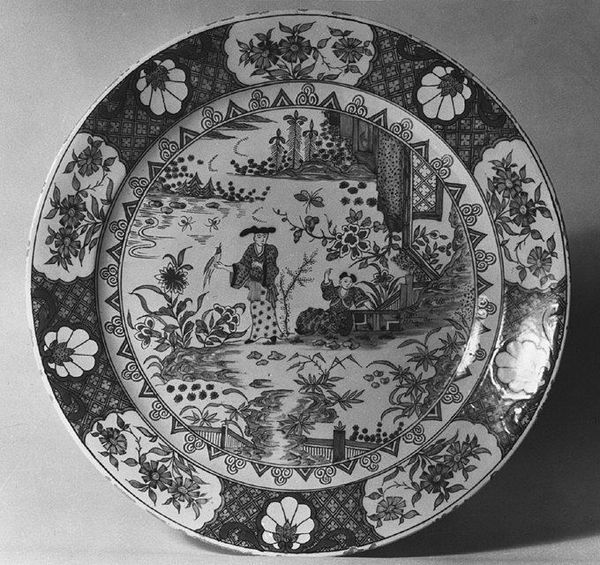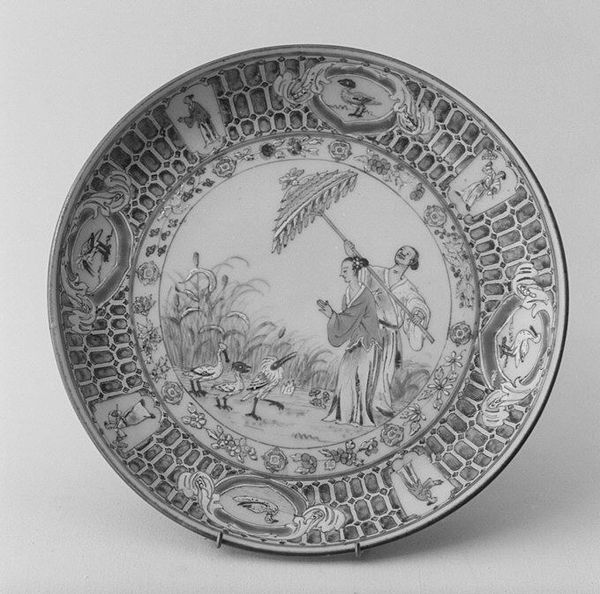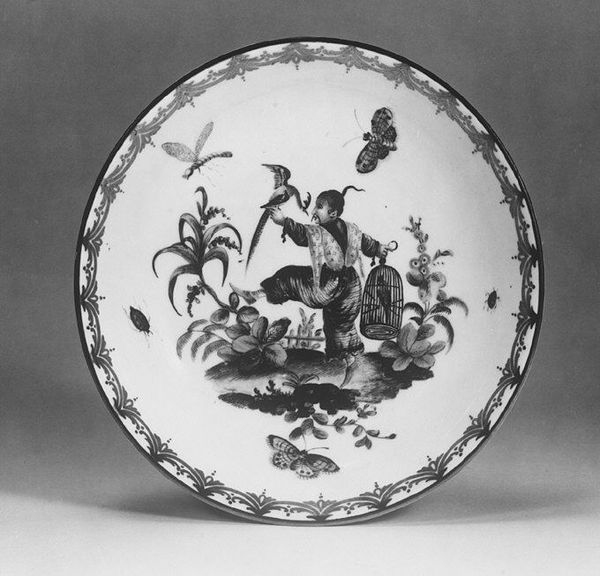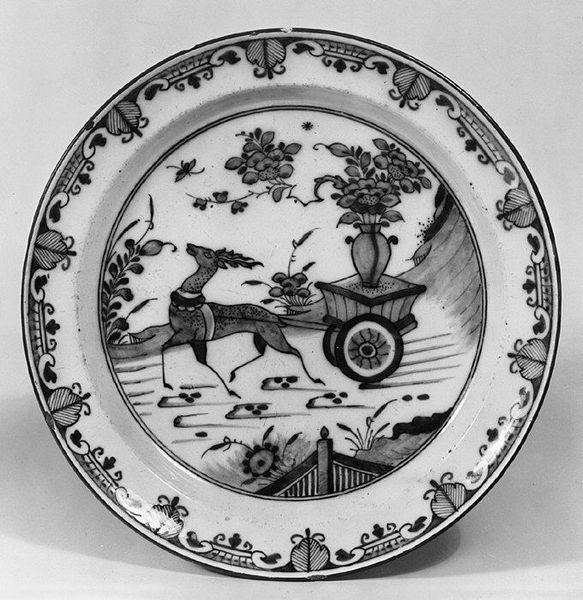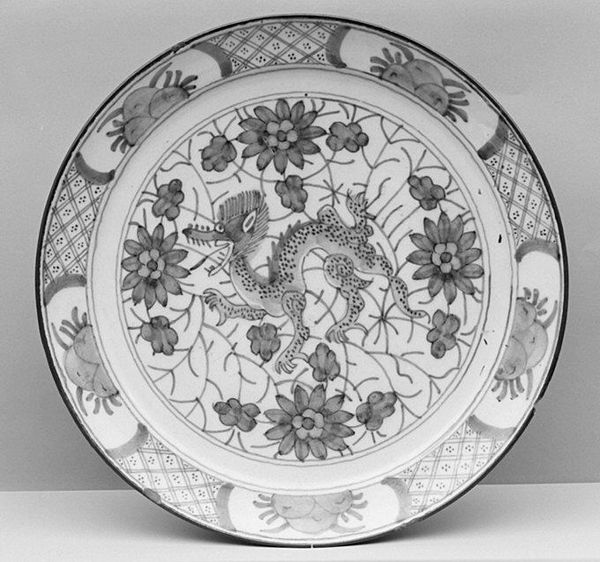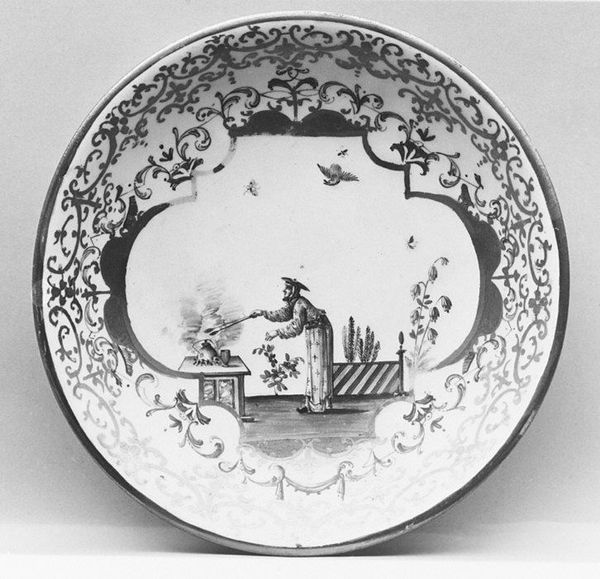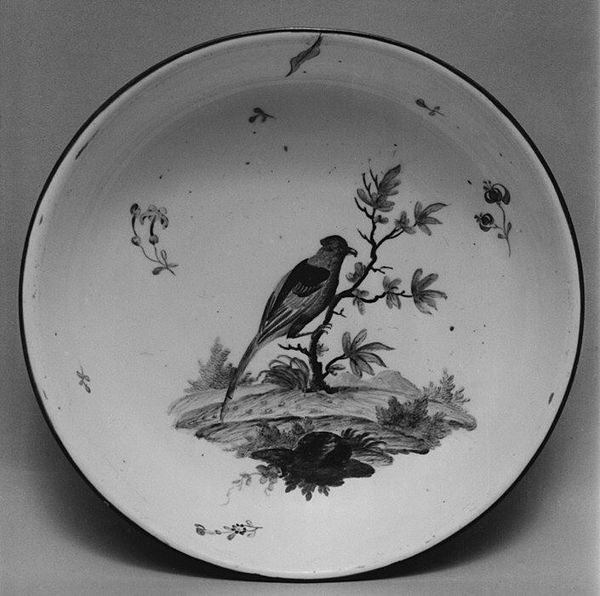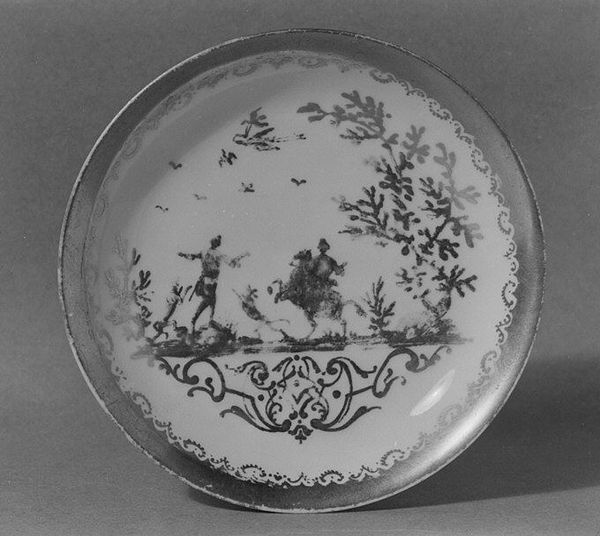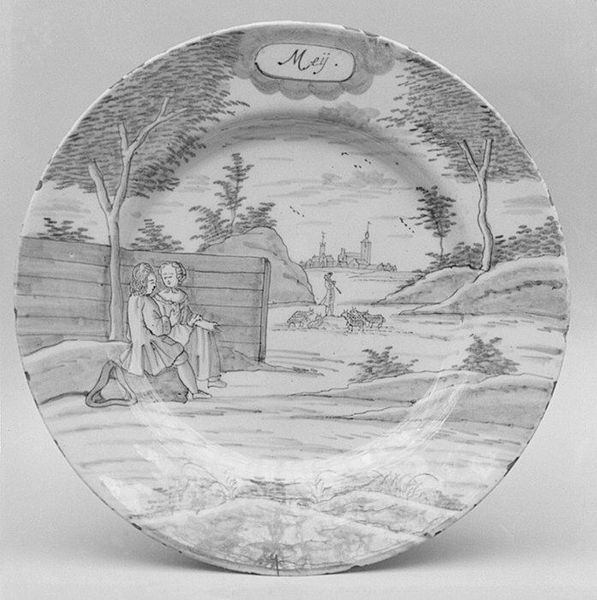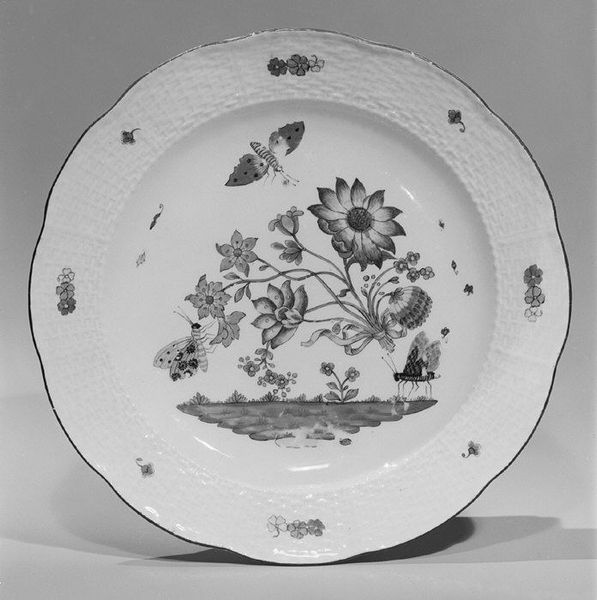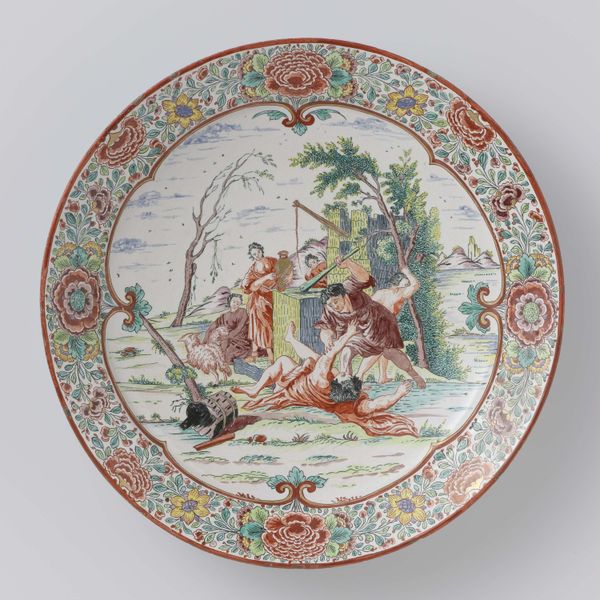
painting, ceramic, sculpture
#
decorative element
#
painting
#
human-figures
#
asian-art
#
ceramic
#
bird
#
flower
#
figuration
#
sculpture
#
genre-painting
#
decorative-art
Dimensions: Diameter: 8 5/8 in. (21.9 cm)
Copyright: Public Domain
Curator: Let’s consider this plate, made between 1695 and 1730 by Pieter Adriaeusz Kocks and his widow. It's currently held at the Metropolitan Museum of Art. Editor: What strikes me first is how detailed it is. The composition has a dream-like quality and delicate precision with all of these botanical and figurative details and it is, in fact, an actual plate! How might we look at this piece, keeping its material reality in mind? Curator: Well, focusing on the materiality shifts our gaze from pure aesthetics to the processes involved. This ceramic piece isn't just an object of beauty. Think about the kaolin clay itself – where was it sourced? Was it local, or was it transported over vast distances, implicating colonial trade routes? The underglaze decoration, created with a limited palette, speaks volumes. Editor: That's fascinating, the global exchange aspect! How did those raw materials and decorative techniques move between cultures? Curator: Precisely. What about the labor required? The hand of the potter, the painter, the kiln worker – all contributing to its production. This "Plate," meant for dining or display, carries the marks of this collaborative production. Is it "high art" or simply functional ware? The boundary blurs when you consider the skill and artistry involved. The floral motifs and human figures could signal aspirations for a cultivated lifestyle, available through global commerce. It becomes a commodity embued with socio-economic meaning, reflecting cultural values through design and access. Editor: It really reframes how I see the object, beyond just something beautiful to admire. I realize it holds stories of trade and craft. Curator: Exactly! It urges us to think critically about the network of relations that gives rise to objects we often take for granted.
Comments
No comments
Be the first to comment and join the conversation on the ultimate creative platform.
